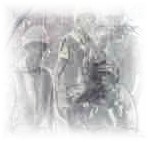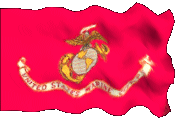PAUL MARQUIS WEB MASTER
SOURCE CITATION:
THE ABOVE OPERATIONS ARE CREDITED
TO 1/3 COMBAT HISTORY FILE AND THE BOOK, "SEMPER FI VIETNAM"


Beau Charger, Belt Tight, Hickory Prairie lV, Cimarron
(18 May-10June 1967)
Because of the Communist rocket and artillery buildup in the DMZ during the spring of 1967, General Westmoreland issued a directive authorizing the entry of forces into the DMZ buffer zone south of the Ben Hai River, actually South Vietnamese territory. The authorization triggered planning for a series of simultaneous operations to be conducted in the new maneuver area, one by ARVN forces and three by the U.S. Marines. The code names for these operations were Hickory for 3d Marine Division units, Beau Charger for SLF Alpha, Belt Tight for STY Bravo, and Lam Son 54 for the South Vietnamese task force. The overall concept envisioned the movement of SLF Bravo into the Hickory Operation by means of Operation Belt Tight, while SLF Alpha was to operate east of the Hickory/Lam Son 54 operational areas under the aegis of Beau Charger. The Beau Charger/Belt Tight/Hickory plan was unique in that it called for the employment of both SLFs in the same operational area at the same time.
The opening scheme of maneuver called for the movement of three separate assault forces to the Ben Hai River where they were to face about and drive south on roughly parallel axes, destroying all enemy units and installations in their paths. The plan included the establishment of a free-fire zone which would require the evacuation of more than 10,000 noncombatants from the buffer zone, a monumental task assigned to the Vietnamese National Police.
D-day for Beau Charger, SLF Alpha's show, was 18 May. Fifteen UH-34s of Lieutenant Colonel Kirby's HMM-263 lifted from the flight deck of the USS Okinawa (LPH-3) and headed inland, each loaded with five Marines from the assault element, Company A, BLT 1/3. L-hour was 0800. The landing zone, Goose, was less than six kilometers from the North Vietnamese boundary of the DMZ, and almost within small arms range of the north bank of the Ben Hai River.
The SLF planners studied aerial photographs of the terrain before the operation, but conducted no pre-landing over-flights to preserve secrecy. For the same reason, they requested no air and naval gunfire preparations of the LZ. Intelligence sources had reported the presence of many enemy antiaircraft machine guns in the area.
Flying lead, Kirby led his 34s toward the potentially dangerous zone, flying at altitudes of less than 50 feet to reduce the enemy gunners' effectiveness. A maximum speed approach, about 80 knots, lack of prominent landmarks, and the tenseness of the situation made navigation difficult at best. Kirby landed at the north end of the zone, but as he did machine gun fire ripped into his helicopter. The enemy bullets wrecked the helicopter's radio and wounded the copilot, crew chief, gunner, and three infantrymen. Another infantryman, killed, fell out of the helicopter. The wounded gunner returned fire and, as Kirby later related, ". . . saved [our] bacon.
Kirby managed to get the helicopter back in the air, but without a radio he had no contact with the rest of his flight or with the Okinawa. Four other UH-34s in the assault wave and two escorting UH lEs suffered damage from enemy fire, but the entire wave unloaded its troops. As soon as Kirby got his crippled helicopter back to the Okinawa, he briefed the SLF commander, Colonel Gallo, on the bad situation at LZ Goose. Colonel Gallo ordered the cancellation of all further lifts to Goose and the substitution of the alternate LZ, Owl, 800 meters south of Goose. The assault element of Company A at Goose was very much alone and in trouble.
Second Lieutenant Dwight G. Faylor's 2d Platoon, Company A spread over 800 yards at LZ Goose. A well-organized enemy force pressed his thinly held position from the northwest. The BLT naval gunfire liaison officer, Ensign John W. McCormick, vainly tried to call in naval gunfire. The ships denied his re quests; no one was certain of the exact location of friendly positions and in many cases the enemy was too close to use naval guns without endangering the Marines. Rescue was on the way, but the Marines at Goose were in desperate straits.
While the abortive assault at LZ Goose was taking place, Company D landed in LVTs at Green Beach, 900 meters southeast of LZ Owl. This landing was unopposed. By 0855, the remainder of Company A had landed at Owl. Overland reinforcements arrived at Owl in the form of one platoon from Company D and a section of tanks. At 0930 the lead elements of Company B began landing. The force at Owl then moved out to rescue the beleaguered platoon at LZ Goose.
By 1100 the rescue force had regained contact with Faylor's platoon, but the enemy showed no signs of breaking off the engagement. Company B joined the fighting at Goose and the tempo of battle in creased. Stymied by a tenaciously held trenchline, the Company A Marines tried another avenue of at tack. Moving against the Communist position under the cover of a tree line, the Marines engaged enemy soldiers in furious hand-to-hand fighting. Company A's advance bogged down again and the infantrymen called in close air support to crack the tough position. Eleven jets blasted the entrenched Communists and finally both Companies A and B, sup ported by tanks, moved forward. As the fighting died down, the Marines counted 67 Communist bodies.
Belt Tight started on 20 May. The initial mission of STY Bravo was to land in the northeastern corner of the 3d Division's Hickory operational area and conduct search and destroy operations within a designated TAOR. At 0714 on the 20th, Companies F and H with a BLT 2 / 3 command group started landing at LZ Parrot. Companies E and G followed with another command group landing at LZ Mockingbird at 0850. The initial enemy reaction was deceptive; the Marines encountered only light resistance.
The general trace of SLF Bravo's sweep in its TAOR was in a southerly direction. The Hickory planners wanted the SLF to dislodge enemy units in the area, thereby driving them into 3d Division units moving up from the south. Neither the 3d Marine Division nor SLF Bravo ever determined how many enemy troops Belt Tight displaced, but the SLF experienced four days of close combat during the operation, certainly an indication that its presence had a spoiling effect on enemy intentions. Throughout the Belt Tight period, BLT 2 / 3 en countered well-trained enemy troops who fought with skill and determination. The enemy's soundly constructed positions and excellent weapons employment caused severe problems for the battalion as it fought its way south. During one of the many mortar attacks, Lieutenant Colonel Delong, the BLT commander, aggravated an old back injury which necessitated his evacuation. His experienced executive officer, Major Wendell 0. Beard, a former Amphibious Warfare School instructor who joined the battalion in February, took command.
Belt Tight ended at 1559, 23 May 1967. At this time BLT 2 / 3 shifted to the operational control of the 9th Marines which assigned the BLT a new area of operations as part of Operation Hickory, representing a continuation of the Belt Tight sweep. Until Hickory ended at midnight on the 2 8th, the battalion continued its deliberate sweep operations. The highlight of this period was a sharp engagement between Company E, commanded by Captain Robert Bogard, and a determined NVA force defending the village of Xuan Hai. The battle started on the afternoon of the 24th and did not end until the Marines completed a detailed sweep of the village ruins at 2155 on the following day. The enemy force had built 40 defensive bunkers in and around the town. Company E destroyed them and counted 27 dead NVA soldiers on the site. SLF casualties were light during the nine days of Belt Tight/Hickory, considering the fact that the battalion was either in contact or under artillery attack during most of the period. STY Bravo had 17 Marines killed and 152 wounded. North Vietnamese losses totaled a con firmed 58 killed and one prisoner taken by the Marines.
When Hickory finished on 28 May, BLT 2/3 remained in the field, still under the operational control of the 9th Marines. During the next three days the battalion participated in Operation Prairie IV which ended on the 31st. The BLT's assignment involved primarily a security operation in relief of both the 2d Battalion, 9th Marines and the 1st Battalion, 4th Marines. BLT 2 / 3 protected artillery positions immediately north of the Cam Lo Bridge, the bridge itself, and provided route security for both truck convoys and engineer units on Route ~61 from north of the Cam Lo Bridge to Con Thien, an air distance of slightly over 10 kilometers.
Although the Prairie IV assignment was of short duration, the end of the operation did not eliminate the security requirements for Route 561 and nearby positions. As a consequence, STY Bravo, still under operational control of the 9th Marines, retained its Prairie IV mission as part of a new 3d Division plan, Operation Cimarron. Cimarron lasted from 1 June until 2 July, though SLF Bravo's involvement lasted only through 10 June.
The SLF participation in Cimarron succeeded, in the sense that there was no local enemy activity. The enemy stayed away, the road remained open, and Con Thien maintained its defensive integrity. The BLT spent 9-10 June reorganizing and moving back to Dong Ha combat base. Re-embarkation on the 11th marked the end of the longest SLF combat deployment ashore since its formation, 23 days of continuous operations. The shipboard respite would be short; SLF Bravo would land again in only a week's time.
